A balcony is the apartment dweller's bite-size piece of outdoor living, and you can take yours in any number of directions. It can be your tanning salon, your outdoor grilling space or even a balcony garden. Adding greenery to your living space can definitely make it more beautiful and restful, though it's challenging if you have a small balcony. Here are 10 appealing balcony garden ideas for those small spaces.
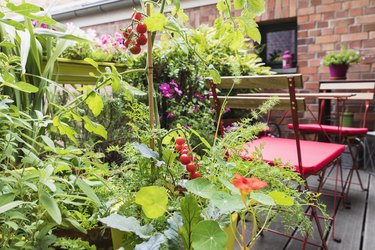
Video of the Day
1. Take Your Balcony Garden Vertical With Towers and Trellises
In a small space, planting a vertical garden is one way to make the best use of what you have. Most vining, trailing plants can be encouraged to climb vertically instead and can be interwoven around a tripod or trellis. In a vegetable garden, you can do this with beans and squash, or in a flower garden, you could use clematis and wisteria. Either way, training your plants vertically will create a lush wall of vegetation to serve as (or complement) a privacy screen or act as a backdrop to shorter plants with colorful blossoms or striking foliage. It's a powerful technique for any small garden.
Video of the Day
Another variation on the theme is a round or octagonal tower, which can be made by wrapping chicken wire around a few posts in the middle of a planter. Plant it with climbing vines for a striking accent in your overall garden design.
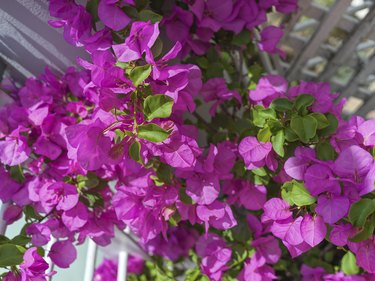
2. Build Your Balcony Garden With Vertical, Freestanding Planters
Trellises and towers are practical solutions to small spaces, but they have limitations. Trellises are usually fixed to a wall or other vertical space, and towers and tripods make a planter difficult to move once it's full. Freestanding vertical planters can be easier for those who aren't into DIY, and they have the advantage of usually being easier to move if you decide your space isn't working and want to rearrange it. They'll vary in style. Some combine shelving with pot racks and a vertical trellis, while others mount four or five windowsill-type planters on a lightweight but sturdy metal frame. Whichever style you choose, they'll provide your balcony garden with maximum impact in your small space.
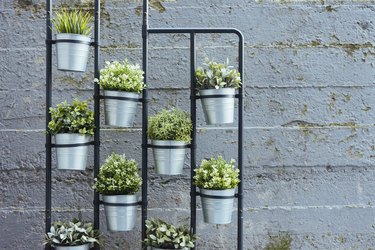
3. Vary Plant Height to Maximize Each Planter's Impact
When you have limited room for planters, your garden design needs to coax the maximum impact from each one, both individually and collectively. One way to do that is to combine plants of various heights, either within a given planter or between neighboring planters, creating a multitiered effect that leads your eye vertically up your plantings.
In narrow, space-saving planters, you can have taller plants or flowers in the rear and shorter (or trailing) plants at the front edge. In round planters, you can create a similar effect by putting the tallest plants in the middle and shorter ones toward the edges. You can double down by using plants that also bring contrasting colors, textures and shapes to the party.

4. Fill Your Balcony Railing With Planters
No matter how your space is set up, you'll have a stretch of balcony railing that marks its edge. That's free space you can count on in any balcony garden, and you can (and should) take advantage of it as much as you can. Load it up with window box/windowsill-style planters and fill them with a combination of plants that grow up and plants that spill and trail over the edge. You might even double down by hanging planters on both the inside and the outside, creating twice the garden space from the same few feet of railing.
If you're struggling to find a combination of railing planters to fit the space neatly, have your local hardware or building-supply store cut you a length of roof gutter to fit your rail. Once you've added end caps and mounted it, it's effectively a custom-fitted planter.

5. Pick a Statement Plant or Planter for a Small Space
Smart designers sometimes buck the advice to use small furniture in small rooms and use a large statement piece of furniture to anchor a room. That strategy transfers well to garden design, even in a relatively modest balcony space. Choose an oversized planter or an extravagantly large plant (perhaps even a tree) and use that as the visual centerpiece of your design. The rest of your flowers and ornamentals only need to provide the extra details and color, while your big piece sets the overall tone. It sounds like a risk on a small balcony, but it works surprisingly well.
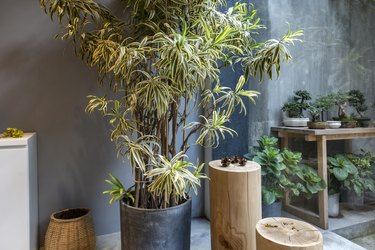
6. Use Hanging Pots and Planters to Maximize Your Space
Balconies are made for container gardening, but on a small balcony, floor space is at a premium. Instead, bulk up your balcony garden by adding hanging baskets and planters. Your hanging plants can provide (or complement) a privacy screen for your outdoor space or a visually interesting counterpoint to the plants below. For maximum variety, use a mix of single and tiered planters and intersperse plants that clump with plants that tumble and trail from the planter. Just remember that the hanging planters need to share the same living space your head occupies, so be sure to leave clear walkways where you won't bonk yourself.
Only mount planters and hooks where there are visible beams for you to attach them. The last thing you want to do is drill randomly into the floor of your upstairs neighbor's balcony, which would compromise the waterproof membrane on the balcony floor (and potentially injure someone's foot).

7. Grow a Canopy Over Your Balcony Garden
The notion of greenery overhead is one of the great balcony ideas, but what if you don't want to navigate around hanging pots? Well, you might consider training vines to make an overhead canopy. You'll need to provide the vines with some support, either by suspending a trellis from the balcony's ceiling or perhaps even building a small, lightweight pergola over your seating area.
Plant your favorite vining, twining plants, from grapes to roses to clematis, on trellises or in planters at one side or end of your balcony and then train them out onto the overhead supports as they grow. (Depending on the plants you choose, you may need to physically secure them to the support.) Once they've grown and filled in, you'll have a cocoon of greenery to help you relax in your outdoor space.
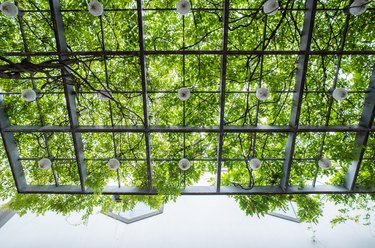
8. Don't Make Your Plants Do All the Work
The focus of your balcony garden should always be your plants. That doesn't mean they have to do all of the heavy lifting, though. When you have limited space, one of the beauties of container gardening is that the colors, shapes and patterns of the planters themselves can play a big role in the overall garden design. Instead of defaulting to the usual terra cottas, greens and blacks, look for space-efficient planters, pots and hanging baskets that bring a splash of vivid color to your space (if necessary, paint them yourself). Aside from the innate visual interest they bring, choosing or creating suitably colored planters can help integrate the garden in your small space with the overall decor of your apartment. It's like landscaping but on a smaller scale.
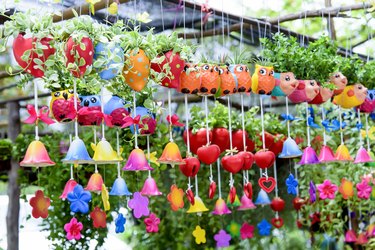
9. Grow a Living Wall
The ultimate space-saving garden option is a living wall. There are several variations on this theme. If you're a DIY enthusiast, you might mount a wooden trellis and use it to support multiple windowsill planters at staggered intervals. If buying a turnkey solution is more your style, you can find manufactured wall-hanging planters of tough canvas with deep pockets for planting herbs, flowers or trailing vines. Whichever solution you choose, filling one wall of your balcony space with plants (and leaving the floor for furniture and feet) is the ultimate space-saving garden plan.
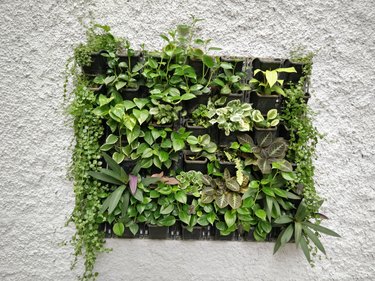
10. The Potted Plants Don't All Have to Be Real
Sometimes, despite your best efforts, your balcony just won't accommodate the garden design of your dreams. Maybe there's not enough light for balcony gardening (or it hits the wrong part of the space), or maybe there isn't room to accommodate enough planters. When you're truly challenged by your space or its growing conditions, it's perfectly OK to fill out the space with artificial plants.
They've come a long way in recent years and can be genuinely attractive in their own right. You can pack them really tightly and not have to worry about them having enough space or shading each other. Whether you use them to build your whole garden or simply to frame a handful of carefully chosen real plants, the faux kind can be a lifesaver in tough situations. We won't tell if you don't.
